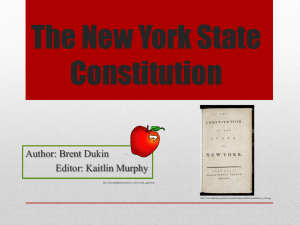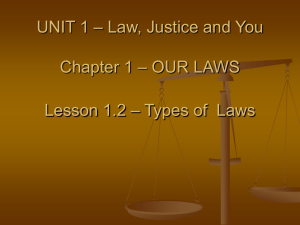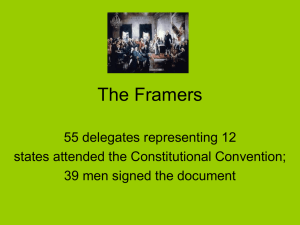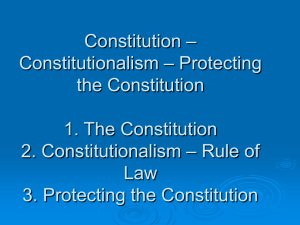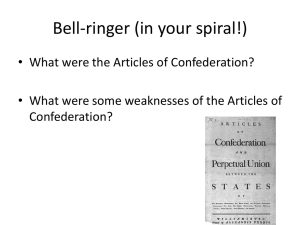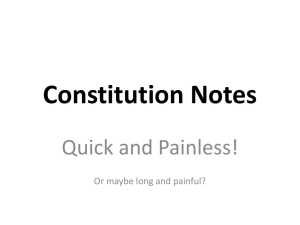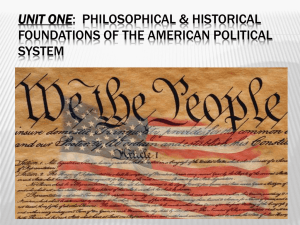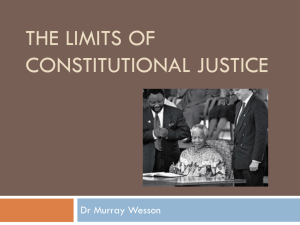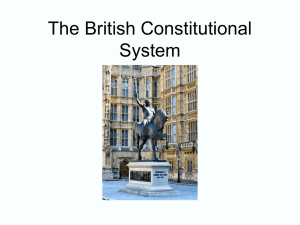Constitutional Law 1
advertisement
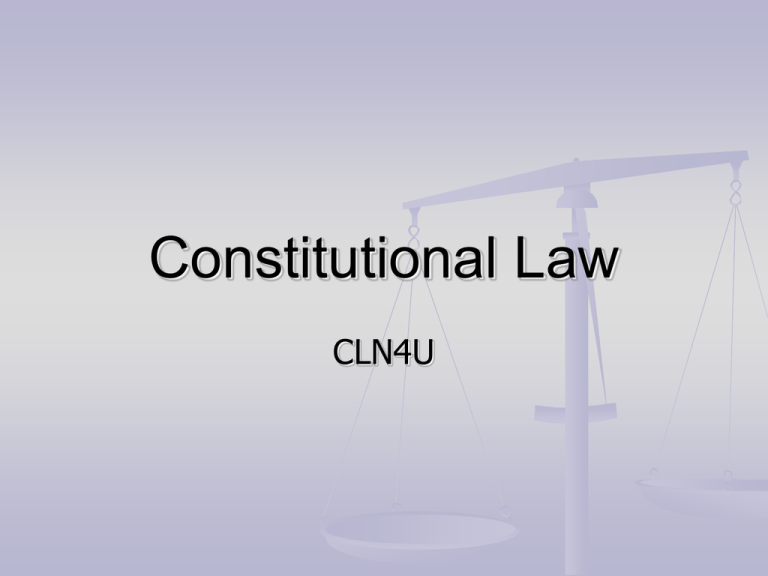
Constitutional Law CLN4U Constitution A legal framework or guideline that: Establishes how power and authority within a country is exercised Assigns limits to that power A constitution provides clear guidelines for how the government can operate, and while important, it is not necessary (i.e. Britain) Canada’s Constitution Canada’s governing principles are based on the British model the governing principles are not codified in a single document, but in constitutional documents, conventions, and common law Constitutional Documents Establish the structure of gov’t, division of powers, and rights of individuals The BNA Act (passed by British parliament in 1867) Amended by British Parliament several times after (all subsequent bills are also considered constitutional documents) Problem? Constitutional Documents Eventually, we wanted to be able to change our constitution without involving a foreign government i.e. come up with an “amending formula” Lots of disagreement on how to do this whose approval is needed? Provinces? Aboriginals? simple majority vs. unanimous? Constitutional Documents In the absence of any consensus on the amending formula, the federal gov’t attempted to patriate the constitution without provincial consent Provinces take feds to court Supreme Court rules it’s not technically illegal, but to do it without substantial provincial support goes against unwritten convention Eventually 9/10 provinces agree on formula and constitution is patriated in 1982 Constitutional Documents The renamed “Constitution Act, 1982” Canadian Charter of Rights and Freedoms is embedded within it Other acts include the Royal Proclamation, 1763 (applies English common law to all of North America, establishes Aboriginal rights) the Quebec Act, 1774 (allows Quebec to use civil law The Statute of Westminster, 1931 (officially ends Canada’s colonial status) Conventions Unwritten rules followed due to tradition; provide details of how out gov’t operates Constitutional documents dicate how the gov’t is set up, conventions are how it’s run For example, no constitutional document states that Canada has to be a democracy Common Law Addresses constitutional disputes and establishes precedents AKA Case Law Constitutional documents can be very vague; courts interpret and clarify them, establishing precedents, which can be modified/adapted over time Questions What are the 3 components of Canada’s Constitution? What’s the purpose of the BNA Act? How did the lack of an amending formula pose a problem for the development of the constitution? Suggest 3 advantages and 3 disadvantages of having a constitution based on unwritten conventions and common law Questions Constitutional documents, conventions, common law BNA Act: Purpose: establish Canada as a nation Parliamentary style democracy Division of powers between federal and provincial Canada will be a self-governing colony of England Will follow British political and legal systems/traditions Lack of Amending Formula: Federal Parliament had to petitions British Parliament to amend the BNA act whenever changes to the Constitution were required (ex: admitting new provinces to confederation) Questions Disadvantages: Conventions aren’t formally written into the constitution and rely on past practice for enforcement (no guarantees that they’ll be followed) Conventions and common law develop over long periods of time, which can slow down constitutional evolution Common law relies on the courts upholding precedents, and is subject to change as a result of judicial interpretation in newer cases Advantages: Constitution can remain flexible and evolve with society Large body of common law can expand citizens’ rights beyond what is explicitly written in the constitution (which can’t possibly address every situation) Not as formalized as amendments and clauses – easier to change Jurisdictional Powers Read p 143 – 146 Answer questions 1 and 3 on p. 150


